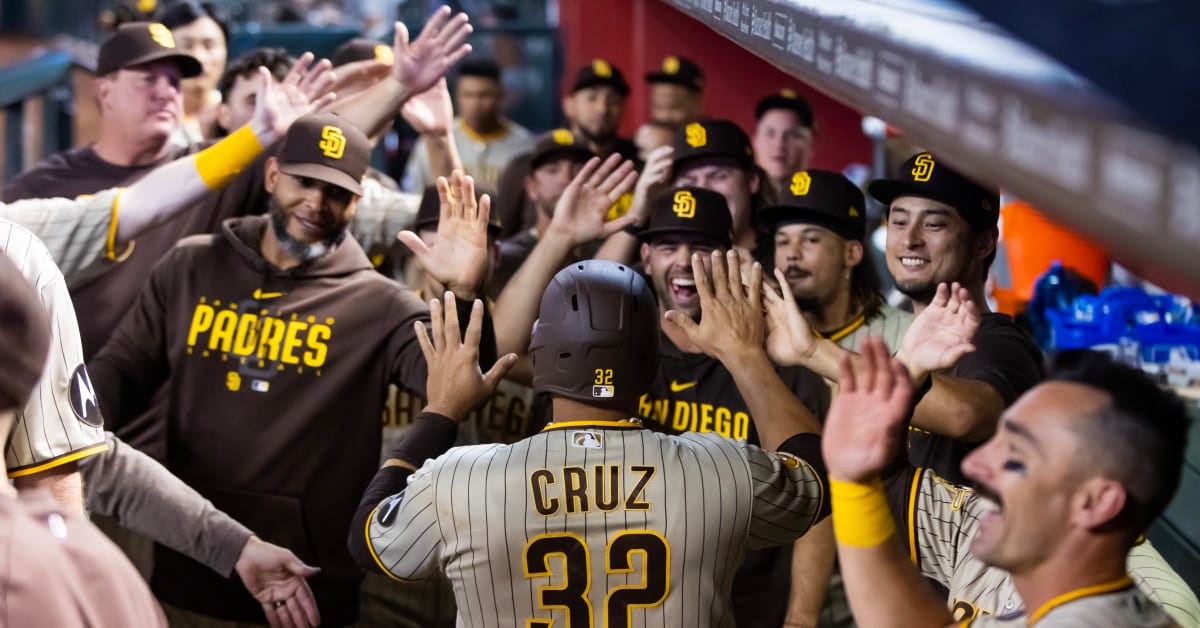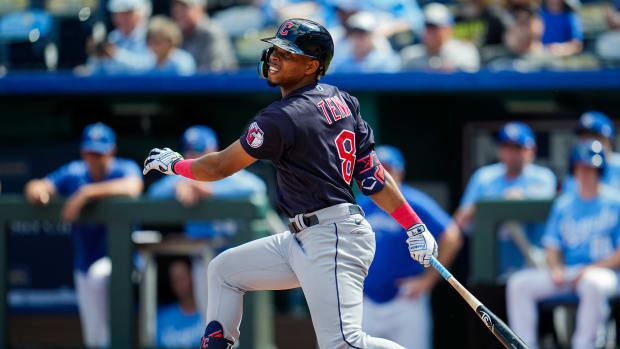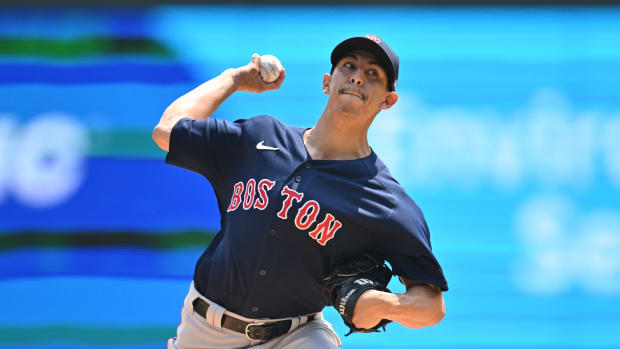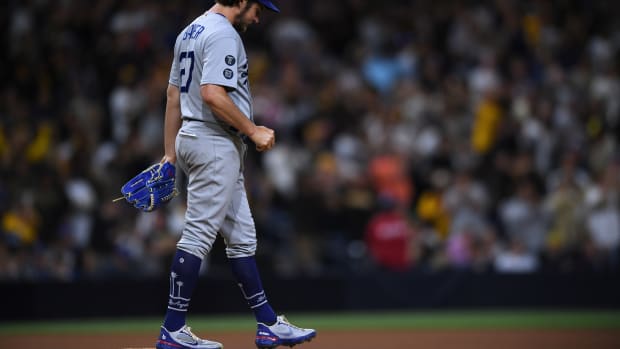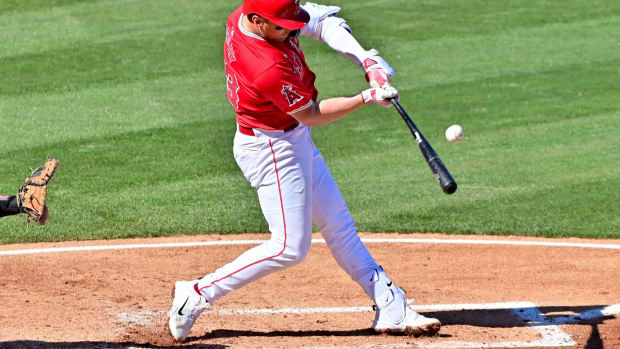Immaculate Grid Is The Game Sweeping Through MLB Clubhouses
Mike Jacobs played 569 games over parts of seven seasons in the major leagues from 2005 to ’12, making his way from the Mets to the Marlins to the Royals back to the Mets and then to the Diamondbacks. He accumulated –2.4 wins above replacement as a pinch hitter and first baseman. The last of his big league time came as a September call-up in Arizona, where he hit .211 in 19 at bats.
But one of his teammates there was lefty Wade Miley, which is how Miley came to know that Jacobs had played in New York and Miami, which is how Miley came to be shouting Jacobs’s name across the Brewers’ clubhouse on a recent Thursday in New York, because Jacobs had just helped Miley earn a 76 rarity score on that day’s Immaculate Grid game.
“Mike Jacobs!” Miley said, grinning. “Point oh eight [percent]!”
A few weeks after the game became a phenomenon among baseball fans, it has begun to take root among baseball players. It is well suited to both: a three-by-three grid, with team logos and individual statistics along the X and Y axes, that requires enthusiasts to select players who match the criteria. (For example: If one cell required a Giant and a Pirate, Barry Bonds might be a good answer. If a cell required a Giant and an MVP award winner, Bonds would work for that, too. Afterward, the interface shows you how common your answers were.) For many people, just completing a grid without a mistake is cause for celebration; some real sickos, such as Miley, try to use the most obscure names they can conjure to achieve a lower—better—rarity score.

The Padres’ star-studded, veteran-laden roster is probably a good place to start when racking your brain for answers on any given Immaculate Grid.
Mark J. Rebilas/USA TODAY Sports
The game’s creator, 29-year-old software developer Brian Minter, built it over two days in April to practice some new coding processes; it has grown from a side project he shared with a handful of friends to a juggernaut that can draw 200,000 players per day. (The puzzle changes daily at midnight, so everyone is trying to complete the same grid.) On Tuesday, he will announce that he has sold it to Sports Reference for terms he declined to share; Sports Reference founder and president Sean Forman says the company will largely keep the game the same but will look to expand into NFL, NBA and NHL versions. It might also consider allowing subscribers to play multiple games a day.
Forman has seen the game’s popularity result in traffic surges on his own site; a landing page that allows users to see which players played for any two teams has gone from largely unused to the third most popular section of Baseball Reference, he says, behind “the front page and [Shohei] Ohtani.” (Surely all those users are looking up alternative answers after the fact rather than cheating.)
Watch MLB with fuboTV. Start your free trial today.
Forman believes the game has taken off because it is so accessible. “It really works no matter what kind of fan you are,” he says. You could fill in a square asking for someone who played for the Red Sox and the White Sox with Hall of Fame catcher Carlton Fisk or with righty Dick McCabe, who made three appearances for each team from 1918 to ’22. Minter likes the connection the game provides to his father, who he jokes plays “on the senior tour,” naming all his childhood favorites. Jessica Brand, a researcher at MLB Network who has become friendly with Minter over Twitter and who suggested the rarity score, points out the way the game allows us to consider life from the 1880s until today. “You can talk about everything that's happened since then,” she says. “That's something bigger than the game itself, but every single part of those eras has players that really connected across these times.”
Mets visiting clubhouse manager Dave Berni loves the game, and after hearing a few Brewers discuss it in the player dining room last month, he began printing out copies to place alongside the crossword puzzles and Sudoku games he already offers. One of his assistants laughed when he saw it. “Immaculate Grid for boomers,” he said. But the analog version has helped introduce the game to ballplayers who, eschewing social media and the death threats that often accompany a bad game, would not otherwise have seen it.
And baseball players must be destroying the game, right?
“That’s what you would think,” says Milwaukee first baseman Rowdy Tellez, who is most proud of remembering that Steve Cishek pitched for the Marlins and for the Angels. “But I bet if you ask any of these guys that are under a year of service time or two, they don’t know.” He used Tom Seaver for a square asking for Mets and 20-game winner; afterward, he says, “One guy was like, ‘Who’s that?’ I was like, ‘He’s like a top-15 best pitcher ever.’” He shakes his head sadly.

The Brewers are one of several teams who have taken to playing Immaculate Grid in the clubhouse.
Benny Sieu/USA TODAY Sports
Yankees ace Gerrit Cole can top that. A younger teammate whom he declines to identify recently asked him who Curt Flood, the player whose 1970 lawsuit challenging the reserve clause helped usher in free agency, was. “We’re gonna clean that up,” says Cole.
He laughs as he considers calling rookies to the front of the team bus to make them fill in the grid aloud. Some squares might be easier than others—Cole has at least twice been answers in the game (Astros-Pirates and Pirates-Yankees), and right fielder Aaron Judge has been at least once (rookie of the year–40 home runs.)
But sometimes even the obvious choices elude players. Orioles righty Kyle Gibson recently flogged himself for growing up 100 miles northwest of Cincinnati but missing Reds–200 hits.
“Pete Rose did not even come to mind!” he laments. Perhaps worse was that he “scraped and scratched” to remember that Mark Mulder played for the A’s and the Cardinals, completely overlooking Mark McGwire. At least that improved his rarity score, though, right? “I’m not even close to trying to get a low score,” he says. “I’m just trying to complete it.”
Gibson, 35, has played for the Twins, the Rangers, the Phillies and now the Orioles, on a one-year deal. He has been an All-Star, pitched in a World Series, made some $50 million. But there is one thing he has never done: selected himself as an answer in Immaculate Grid. He'll have to ask his agent to keep that in mind during the offseason.






























